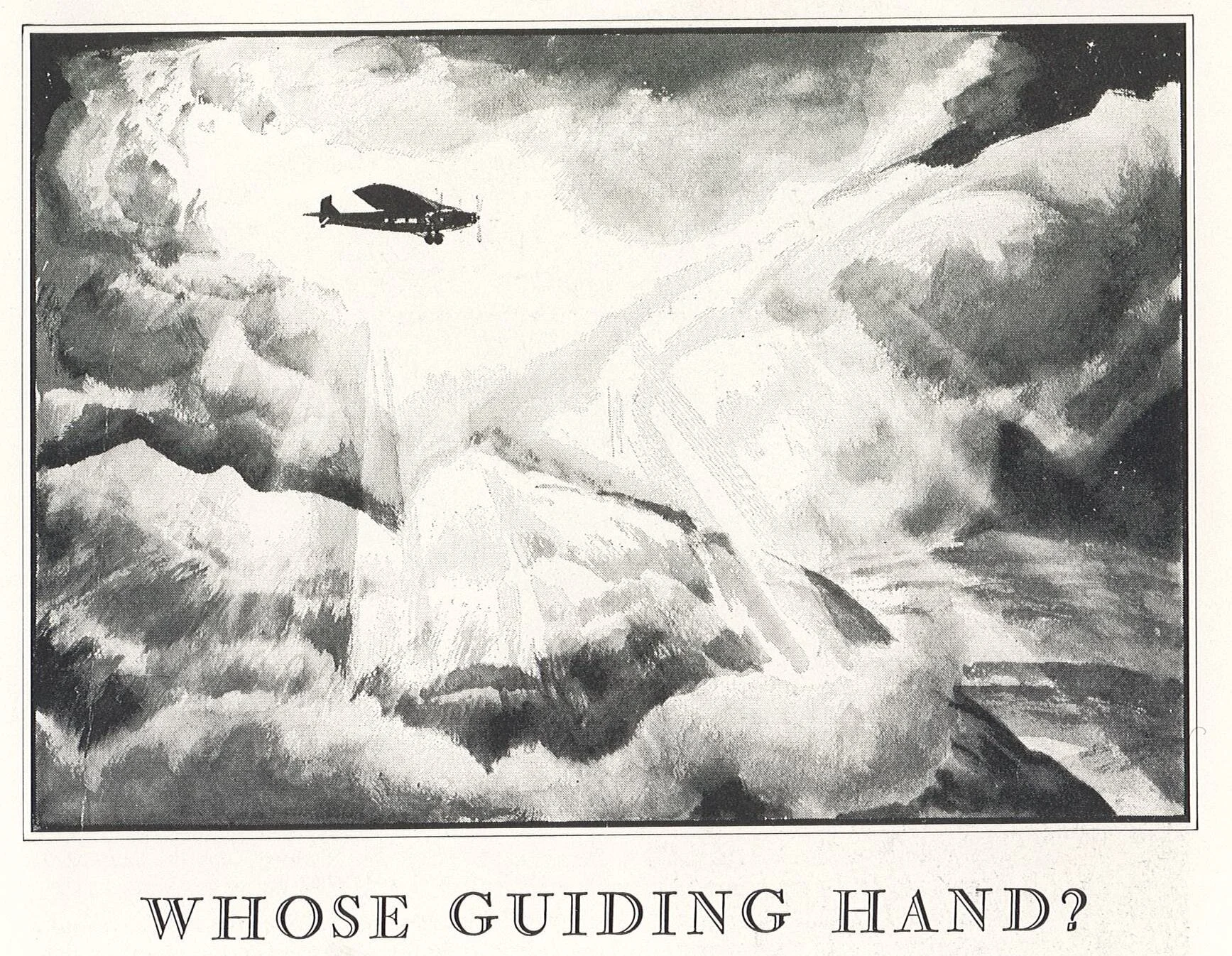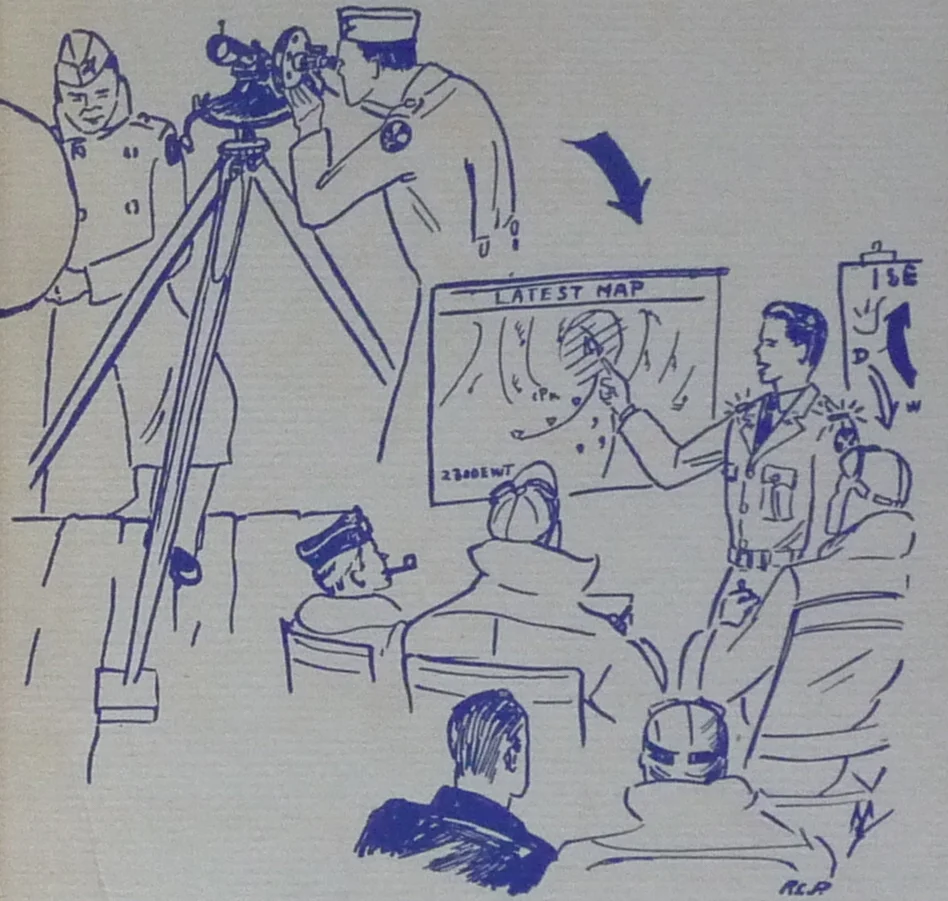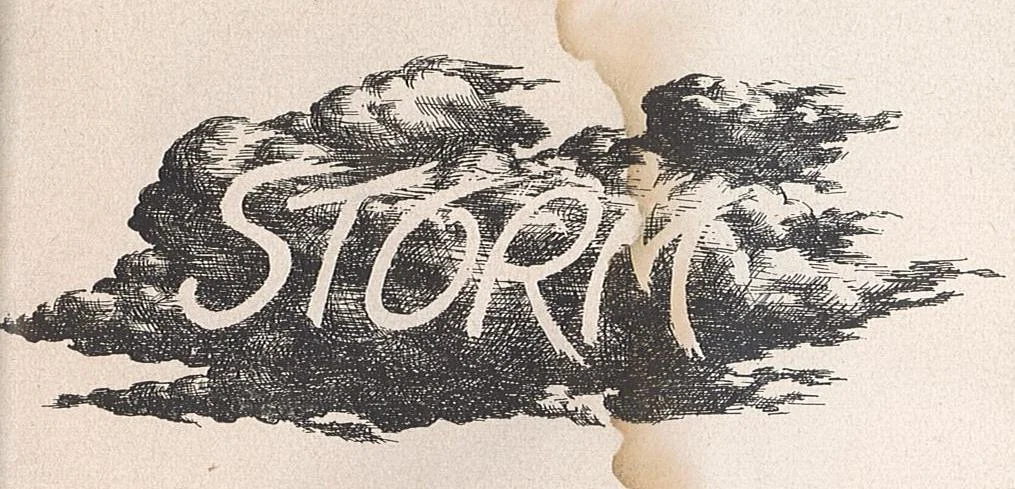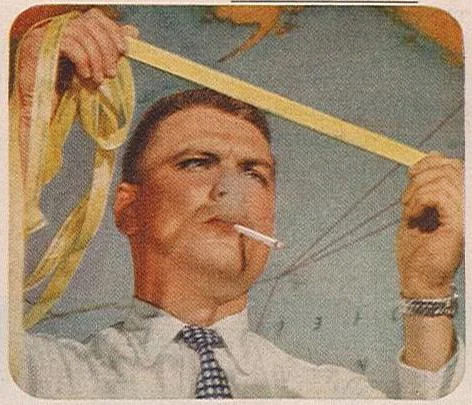Book Excerpt: 'Feminists Prevail; Meet the Himmicane'
This is a guest post by Dr. Liz Skilton, an Assistant Professor of History and the J. J. Burdin M.D. and Helen B. Burdin/BORSF Endowed Professor in Louisiana Studies at the University of Louisiana at Lafayette.
Skilton’s new book Tempest: Hurricane Naming and American Culture (LSU Press, 2019) considers the history of hurricane naming, why we name storms, and what effect these names have on society. The study chronologically traces the development of the naming system from its pre-World War II origins, as connected with other naming and identification systems of the natural world, through the present. Taking a Gulf South perspective, the study focuses on key storms that have shaped not only naming history but also understanding of hurricanes in American culture.
This post is adapted from pp 114-118 of Tempest.
The decision to change the names from the all-female naming list to the alternating-gendered naming list we use today was made by the Secretary of Commerce, Dr. Juanita M. Kreps, who oversaw the National Oceanic and Atmospheric Administration (NOAA) and the National Weather Service (NWS) from 1977 to 1979. Secretary Kreps, fully aware of the hurricane naming protest by feminist Roxcy Bolton (who jokingly coined the term ‘himmicane’) and others between 1969 and 1973, issued an order to change hurricane names for the 1978 hurricane season. As the names for tropical storms were already set globally for the 1978 season by the World Meteorological Organization, the U.S. National Weather Service worked out a deal with Mexico to change the names for the Pacific Ocean region for the year. In exchange, Mexican-influenced names such as "Fico" were added to the Pacific Coast naming list.
Headline from the New Orleans Times-Picayune, May 13, 1978.
On May 12, 1978, NOAA, overseeing the National Weather Service, announced that Eastern Pacific hurricanes of the 1978 season would alternate female and male names, starting with “Bud.”[I] If all went well, all future lists would include male names. In the United States, reactions to the name change decision reflected a mix of witty acquiescence and vituperative denial. For example, in one editorial cartoon printed beside a front-page article in the New Orleans Times-Picayune, an obstetrician exclaims to a female hurricane that she “had a son,” a male hurricane. But the caption on the cartoon has a more serious tone, expressing the dismay of reporters and weathermen throughout the country: “Feminists Prevail: Storms Now Him and Her.”[ii] The accompanying full-page article was cynically titled, “Meet the Himicane: Liberated Wind That Still Does No Good,” a dig at the connection persistently drawn between the feminist movement and a destructive storm. [iii]
While NOAA’s official reaction to Kreps’s decision was supportive, it was also decidedly brief. Director Neil Frank explained in a press release: “There’s been some pressure in the United States, no question about it,” to change the system. And “we at the NOAA decided that in this day and age it was the sensible thing to do to name some hurricanes after men.”[iv] Using statements he had used in press briefings the year before when discussing the decision to cede control of the naming system to the World Meteorological Organization and potential changes to the names following Australia’s decision, Frank repeated that “names are not really significant to me. [. . .] Hurricanes are death and destruction. I don’t want to get involved in a controversy that draws attention away from the hurricane. I’m concerned about the warnings and people responding to the warnings—not what we call them.”[v] While Frank’s statements made clear that the Weather Bureau was relatively on board with the abrupt naming change, some newspaper editorials reflected much less confidence in the change. “We guess that it was good news” finding out that hurricanes would no longer be solely named after women, stated the Los Angeles Times; “but we are not too sure.” The editors complained that they did not like either the old system or the new, and that “there has to be a better solution.” They asked, “Why not name hurricanes numerically [or] after things?”[vi]
Judgment on the decision also appeared in the “Headliners” section of the New York Times, which included a picture of Director Frank with the tagline, “Goodbye to Chauvinism.” The opening sentence of the article punned, “hell hath no fury like a woman stormed.” The final line quipped that the change surely had “nothing to do with the fact [that Frank’s] boss, Secretary of Commerce Juanita M. Kreps, is a woman.”[vii] In interviews the day of, Frank himself was quick to point out that the pressure he was referring to that influenced the decision was made by new Gulf South feminists Patricia (Twiss) Butler of Houston and Dorothy Yates of Miami, not Roxcy Bolton, nor his boss, Secretary Kreps.[viii] The irony was on point: the facts all point to the conclusion that the decision was a direct result of Juanita Kreps’s influence (and Roxcy Bolton’s).
While weathermen were mercilessly teased for losing to feminists, Secretary Juanita Kreps was roundly criticized in the national media in explicitly gendered terms for her role in changing the naming process. Reporters likened Kreps’s decision to a “storm” of “fury” that had no contextual basis or justification. Thus they again compared feminist activity to irrational, turbulent storms. In fact, as the historical record shows, Kreps was acting within the context of a series of changes occurring on a broader scale in the United States. By 1978, feminists had ushered in sweeping reforms in American law, public policy, and social consciousness: victories in the Supreme Court for women’s equality, inclusion in the US military, and even the placement of key women, like Kreps herself, in once male-dominated professions. These advancements, among others, demonstrated that gender equality was important at a governmental level and reinforced that separation or exclusion of the sexes was indeed sexist.
As with other gender-equality changes of the 1970s, once the change finally went through, there was no discussion of a return to the all-female naming system. All agreed that the new male-female system was here to stay. In late 1978, representatives of NOAA “went to the international community” of twenty-one Atlantic Ocean tropical storm-affected countries requesting to change the global naming system. After a trial period in the 1979 season, a standardized system of alternating male-female names was introduced globally.[ix] […] Time would tell how this policy change in names would impact the perception of hurricanes, particularly the male-named storms of the future.
Citations
[i]“Weathermen Blown Over; Hurricanes To Be Unisex,” Los Angeles Times, May 13, 1978.
[ii]“Feminists Prevail,” New Orleans Times-Picayune, May 13, 1978; “Hurricanes to become Himmicanes in 1979,” Mobile Press-Register, May 13, 1978.
[iii]“Meet the Himicane: Liberated Wind That Still Does No Good,” New Orleans Times-Picayune, May 13, 1978.
[iv]“Hurricane Watchers Now Prepare for . . . Bud, Hector, Sergio,” Washington Post, May 13, 1978, and “Another Sexist Bastion Falls: Hurricanes Renamed,” New York Times, May 13, 1978.
[v]“Other Nations Must Consent,” Baltimore Sun, December 16, 1977.
[vi]“What’s In A Number?” Los Angeles Times, May 21, 1978.
[vii]“Goodbye to Chauvinism,” in “Headliners,” New York Times, May 14, 1978.
[viii]“Another Sexist Bastion Falls,” New York Times, May 13, 1978.
[ix]“Hurricane Watchers Now Prepare for . . . Bud, Hector, Sergio” Washington Post, May 13, 1978.







